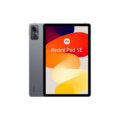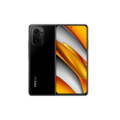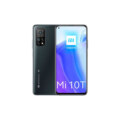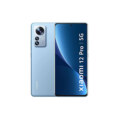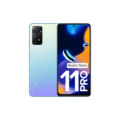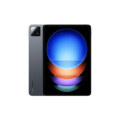Xiaomi Mi 10




Specs
General
| Device Type | Xiaomi Redmi Phone |
| Announced | 13 February, 2020 |
| Released | 14 February, 2020 |
| Status | Available |
Design
| Dimensions | 162.6 x 74.8 x 8.96 mm |
| Weight | 208 g |
| Protection | Glass front (Gorilla Glass 5), glass back, aluminum frame |
| Colors | Ice Blue, Peach Gold, Titanium Silver |
Display
| Refresh Rate | 90 Hz |
| Display Type Display Technology => A number of display technologies and types used in mobile phones => TFT (Thin Film Transistor), IPS (In-Place Switching), OLED (Organic Light Emitting Diode), AMOLED (Active-Matrix Organic Light-Emitting Diode), Super AMOLED (an even advanced version of AMOLED), Resistive Touchscreen (Resistive touchscreens contain two layer of conductive material with a very small gap between them which acts as a resistance), Capacitive Touchsceen (Capacitive touchscreen technology consists of a layer of glass coated with a transparent conductor) | Super AMOLED |
| Size | 6.67 inches |
| Resolution | 1080 x 2340 pixels |
| Pixel Density Pixel Density (PPI) is refers to the concentration of pixels on a particular display, measured in pixels per inch (ppi). Pixel density is calculated by dividing the diagonal pixel resolution of a display by its diagonal size, higher pixel density better display quality. | ~ 386 ppi |
| Touch Screen | Capacitive Touchscreen, Multitouch |
| Display Protection Display Protection => Gorilla Glass is a special alkali-aluminosilicate glass shield with exceptional damage resistance that helps protect mobile displays from scratches, drops, and bumps of everyday use, It is always better to go for a smartphone with Gorilla Glass for that added protection and peace of mind. | Corning Gorilla Glass 5 |
| Features | HDR10+, 500 nits (typ) |
| Secondary Display | No |
Camera
| Front Camera | 20 MP, f/2.0, (wide) |
| Camera Setup | Triple |
| Main Camera Camera is able to capture photographs and usually videos, The most important characteristics of a camera are the resolution (measured in megapixels), lens focus type (fixed or automatic), higher megapixel cameras are known to capture higher quality photos, but not always a good measurement of the photos quality. |
108 MP, f/1.7, (wide) 13 MP, f/2.4, 12mm (ultrawide) 2 MP, f/2.4, (macro) 2 MP, f/2.4, (depth) |
| Video | 8K@30fps, 4K@30/60fps, 1080p@30/60fps; gyro-EIS |
| Camera Features | Geo-tagging, touch focus, face detection, HDR, panorama |
| Flash Flash Light => There is commonly two types of flash lights are used in camera mobile phones, LED Flash (LED flash offers lower power consumption with drive circuitry that takes up very little room, LEDs can be strobed faster than any other light source), Xenon Flash (xenon flash produces an extremely intense full-spectrum white light for a very short duration) | Dual-LED dual-tone flash |
Hardware
| Operating System OS => Every computer system run on a base software called Operating System (OS). Operating System controls all basic operations of the computer (such as smartphone, PDAs, tablet computers and other handheld devices). The Operating System allows the user to install and run third party applications (apps), apps are used to add new functionality to the device. | Android 11 |
| Chipset Chipset is a group of integrated circuits designed to perform one or a more dedicated functions, often with real time computing constraints, Popular smartphones are equipped with more advanced embedded chipsets that can do many different tasks depending on their programming. | Qualcomm SM8250 Snapdragon 865 |
| CPU CPU (Central Processing Unit) mostly known as processors, CPU processes instructions in order to carry out certain functions that make your device operate properly. Processors are often described as the brain of computers, smartphones and tablets, Smartphones and tablets rely on processors to carry out their every task, Processors are an incredibly important factor in selecting any type of computing device, including your smartphone. | Octa-core (1 x 2.84 GHz Kryo 585 + 3 x 2.42 GHz Kryo 585 + 4 x 1.80 GHz Kryo 585) |
| Architecture | 64 bit |
| Fabrication | 7 nm |
| GPU GPU (Graphics Processing Unit) is a single-chip processor designed to rapidly manipulate and alter memory to accelerate the creation of images in a frame buffer intended for output to a display, This includes things such as lighting effects, object transformations, and 3D motion. | Adreno 650 |
| RAM (Memory) RAM (Random Access Memory) is a type of computer memory that can be accessed randomly, any byte of memory can be accessed without touching the preceding bytes that allows information to be stored and accessed quickly from random locations. RAM is the most common type of memory found in computer systems, smartphones, tablets and other electronic devices. | 12 GB |
| Internal Storage Internal Storage is a data storage space (flash memory) mostly used in smartphones, tablets and other electronic devices where operating system, apps, music, photos, videos, files and other user data Is stored. | 256 GB |
| Card Slot Memory Card Slot is a special slot for inserting a memory card. Memory cards allow you to expand the phone's built-in memory, A memory card (sometimes called a flash memory card or a storage card) is a small storage medium used to store data such as text, pictures, audio, and video, for use on small, portable or remote computing devices such as mobile phones, mp3 players, digital cameras. | |
| Sensors Sensors are electronic components that detects and responds to some type of input from the physical environment. The specific input could be light, heat, motion, moisture, pressure and location, The output is generally a signal that is converted to use in computing systems, a location sensor, such as a GPS receiver is able to detect current location of your electronic device. | Accelerometer, Barometer, Compass, Fingerprint (under display, optical), Gyro, Proximity |
Network
| SIM TYPE SIM (Subscriber Identity Module) is a small card that contains mobile network subscriber's account information. This allows the phone using the card to attach to a mobile network. The SIM card is most commonly associated with GSM and UMTS mobile networks. Moving a SIM card from one phone to another allows a subscriber to switch mobile phones without having to contact their mobile network carrier. SIM cards can also be used by a phone to store limited amounts of data, such as phone numbers and text messages. | Nano SIM |
| SIM Technology | Dual Sim, Dual Standby (Nano-SIM) |
| 2G Network | GSM 850 / 900 / 1800 / 1900 |
| 3G Network | HSDPA 850 / 900 / 1700(AWS) / 1900 / 2100 |
| 4G Network | LTE band 1(2100), 2(1900), 3(1800), 4(1700/2100), 5(850), 7(2600), 8(900), 12(700), 17(700), 34(2000), 38(2600), 39(1900), 40(2300), 41(2500) |
| 5G Network | 5G band 1(2100), 3(1800), 7(2600), 28(700), 77(3700), 78(3500) |
Multimedia
| FM Radio | |
| Stereo Speakers | YES |
| Loudspeaker | YES |
| Audio Jack | NO |
| Audio Features | 24-bit/192kHz Hi-Res audio |
Connectivity
| Wi-fi Wi-Fi is a popular wireless networking technology using radio waves to provide high-speed network connections that allows devices to communicate without cords or cables, Wi-Fi is increasingly becoming the preferred mode of internet connectivity all over the world. | Wi-Fi 802.11 a/b/g/n/ac/ax, dual-band, Wi-Fi Direct, DLNA |
| Bluetooth Bluetooth is a wireless communications technology for exchanging data between mobile phones, headsets, computers and other network devices over short distances without wires, Bluetooth technology was primarily designed to support simple wireless networking of personal consumer devices. | v5.1 with A2DP, LE, apt-X HD, aptX Adaptive |
| GPS GPS The Global Positioning System is a satellite-based radio navigation system, GPS permits users to determine their position, velocity and the time 24 hours a day, in all weather, anywhere in the world, In order to locate your position, your device or GPS receiver must have a clear view of the sky. | dual-band A-GPS with GLONASS, BDS, GALILEO, QZSS, NavIC |
| USB | 2.0, Type-C 1.0 reversible connector, USB On-The-Go |
| EDGE EDGE (Enhanced Data GSM Environment) is a wireless network technology generally considered the next step in the 2G network offers data transfer rates up to four times faster than ordinary GSM networks, Generally, EDGE is used for the purpose of wireless data transfer, such as sharing pictures and videos or browsing the Internet via a mobile phone connection. | |
| GPRS GPRS (General Packet Radio Service) is a packet oriented mobile data service on the 2G and 3G cellular communication system's global system for mobile communications (GSM), Generally, GPRS is used for the purpose of wireless data transfer, such as sharing pictures and videos or browsing the Internet via a mobile phone connection. | |
| Speed | 3G (HSPA 42.2/5.76 Mbp), 4G LTE-A, 5G capable (2+ Gbps DL) |
| Wi-fi Hotspot | |
| NFC NFC (Near field communication) is a set of standards for smartphones and similar devices to establish peer-to-peer radio communications with each other by touching them together or bringing them into proximity, usually no more than a few inches. |
Features
| Messaging | SMS(threaded view), MMS, Email, Push Mail, IM |
| Web Browser Web Browser => a web browser is a software application used to locate, retrieve and display content on the World Wide Web, including Web pages, images, video and other files, The primary function of a web browser is to render HTML, the code used to design or markup webpages. | HTML5 |
| Games | Built-in + Downloadable |
| Torch |
Battery
| Battery Type Battery Type => Cell phones run on various kinds of batteries depending on the manufacturer, phone size or shape and features. There are basically four types of cell phone batteries => Lithium Polymer, Lithium Ion, Nickel Metal Hydride and Nickel Cadmium. | Li-Ion (Lithium Ion) |
| Capacity Battery Capacity is a measure (typically in Amp-hr) of the charge stored by the battery, and is determined by the mass of active material contained in the battery. The battery capacity represents the maximum amount of energy that can be extracted from the battery under certain conditions. | 4780 mAh |
| Placement | Non-removable |
| Wireless Charging Wireless Charging (Inductive Charging) uses an electromagnetic field to transfer energy between two objects. This is usually done with a charging station. Energy is sent through an inductive coupling to an electrical device, which can then use that energy to charge batteries or run the device. | No |
| Extra |
Fast battery charging 30W Fast wireless charging 30W, Power bank/Reverse wireless charging 10W Power Delivery 3.0, |
Xiaomi Mi 10: Detailed Review
Introduction:
Launched in early 2020, the Xiaomi Mi 10 is a flagship device that marked Xiaomi’s serious entry into the premium smartphone segment. Packed with top-tier hardware like the Qualcomm Snapdragon 865 processor, a 108 MP camera, and a beautiful AMOLED display, the Mi 10 offers flagship-grade features at a relatively affordable price compared to its competitors. In this review, we’ll cover its design, display, performance, camera, battery life, software, and provide a summary of its pros and cons.
Specifications at a Glance
- Display: 6.67-inch AMOLED, FHD+ (2340 x 1080), 90Hz refresh rate, HDR10+
- Processor: Qualcomm Snapdragon 865
- RAM: 8 GB / 12 GB
- Storage: 128 GB / 256 GB UFS 3.0
- Rear Cameras: 108 MP primary (f/1.7, OIS), 13 MP ultra-wide (f/2.4), 2 MP macro, 2 MP depth sensor
- Front Camera: 20 MP (f/2.0)
- Battery: 4780 mAh, 30W fast charging, 30W wireless charging, 5W reverse wireless charging
- Operating System: MIUI 11 based on Android 10, upgradable to MIUI 12
- Dimensions: 162.6 x 74.8 x 9 mm
- Weight: 208 grams
Design and Build Quality
Aesthetics:
The Xiaomi Mi 10 boasts a sleek and premium design. With its curved edges, glass front and back (protected by Gorilla Glass 5), and an aluminum frame, the phone feels sturdy and luxurious. The camera bump on the rear adds a bit of heft, but the phone still manages to look elegant.
Color Options:
The Mi 10 comes in various colors, including Coral Green, Twilight Grey, and Peach Gold, which cater to different user preferences.
Durability:
The Mi 10’s build quality is impressive, with Gorilla Glass 5 on both the front and back, offering good protection against scratches and minor drops. However, it lacks an official IP rating for water and dust resistance, which could be a downside for users prone to accidents.
Ergonomics:
At 208 grams and with a 6.67-inch screen, the Xiaomi Mi 10 is a large and slightly heavy phone. It’s comfortable to hold, but users with smaller hands might find it difficult to use with one hand. The curved edges make the grip more secure, and despite its weight, it feels balanced.
Display
Specifications:
- Size: 6.67-inch AMOLED
- Resolution: 2340 x 1080 (Full HD+)
- Refresh Rate: 90Hz
- HDR Support: HDR10+
- Brightness: Up to 1120 nits peak brightness
- Protection: Gorilla Glass 5
Performance:
The Mi 10’s 6.67-inch AMOLED display offers vibrant colors, deep blacks, and excellent contrast, making it ideal for content consumption, gaming, and everyday tasks. With a 90Hz refresh rate, the display is smooth and responsive, providing a noticeable improvement in scrolling and animations over 60Hz screens. HDR10+ support ensures great dynamic range for watching HDR content.
Color Accuracy and Brightness:
The color accuracy of the Xiaomi Mi 10 is impressive, with rich and punchy colors, perfect for media consumption. The display can also reach up to 1120 nits of brightness, ensuring excellent visibility even in bright outdoor conditions.
Smoothness:
While it lacks the 120Hz refresh rate found in some competitors, the 90Hz display is still fluid and offers a smooth experience in everyday use, especially when gaming or browsing.
Performance
Hardware:
- Processor: Qualcomm Snapdragon 865 (7 nm+)
- RAM: 8 GB or 12 GB LPDDR5
- Storage: 128 GB or 256 GB UFS 3.0 (non-expandable)
Performance Evaluation:
The Snapdragon 865 chipset ensures blazing-fast performance, capable of handling everything from high-end gaming to multitasking without any hiccups. Combined with up to 12 GB of LPDDR5 RAM, the Mi 10 flies through tasks with ease, whether you’re switching between apps, editing videos, or playing graphically intense games.
Benchmark Scores:
- Geekbench 5: Scores around 910 (single-core) and 3360 (multi-core), placing it among the top performers of its generation.
- AnTuTu: Scored over 570,000, reflecting its ability to handle heavy-duty tasks and gaming with minimal lag.
Gaming:
With the Adreno 650 GPU, the Xiaomi Mi 10 performs excellently in gaming. Games like PUBG Mobile and Call of Duty: Mobile run smoothly at high settings, with no noticeable frame drops.
Camera
Rear Camera Setup:
- Primary Lens: 108 MP (f/1.7) with OIS
- Ultra-Wide Lens: 13 MP (f/2.4), 123° field of view
- Macro Lens: 2 MP
- Depth Sensor: 2 MP
Front Camera:
- Resolution: 20 MP (f/2.0)
Camera Performance:
- Daylight Photography: The Xiaomi Mi 10’s 108 MP camera excels in daylight conditions, capturing detailed and vibrant images. The large sensor allows for high-resolution photos, and the AI optimizations adjust color balance and exposure effectively.
- Low-Light Photography: In low-light conditions, the Mi 10’s night mode works well to brighten scenes and reduce noise, though it struggles a bit more compared to competitors like the Google Pixel series.
- Ultra-Wide Performance: The 13 MP ultra-wide camera provides decent shots, though there’s a slight drop in detail compared to the primary sensor, especially in low light.
- Video Recording: The Mi 10 supports 8K video recording at 30fps, which is impressive, though 4K at 60fps is more practical for most users. Video stabilization (EIS + OIS) helps reduce shake, ensuring smooth footage even when moving.
Selfies:
The 20 MP front camera produces clear, detailed selfies, with accurate skin tones and AI-enhanced beautification features. It performs well in good lighting, though it struggles a bit in low-light environments.
Battery Life
Specifications:
- Capacity: 4780 mAh
- Charging: 30W wired fast charging, 30W wireless charging, 5W reverse wireless charging
Performance:
The 4780 mAh battery in the Xiaomi Mi 10 provides solid all-day battery life, even with heavy use. It easily lasts through a full day of tasks like gaming, streaming, and social media browsing, with around 6-8 hours of screen-on time depending on usage.
Charging:
The 30W fast charging takes the phone from 0 to 100% in just over an hour. The inclusion of 30W wireless charging is a standout feature in this price range, allowing users the flexibility to charge wirelessly without sacrificing speed. The 5W reverse wireless charging is a neat addition for charging accessories like wireless earbuds.
Software
Operating System:
- MIUI 11 based on Android 10 (upgradable to MIUI 12)
User Experience:
MIUI has evolved into a polished and feature-rich skin over Android. It offers a range of customization options, an app drawer, and smooth animations. However, it comes with a fair amount of bloatware, which can be uninstalled or disabled if needed.
Software Features:
- Game Turbo: Enhances gaming performance by optimizing hardware and blocking notifications during gameplay.
- Dark Mode and Always-On Display: Both are well implemented, taking full advantage of the AMOLED screen.
Pros & Cons
Pros:
- Powerful Performance: The Snapdragon 865 and up to 12 GB of RAM ensure top-tier performance across the board.
- Excellent Camera: The 108 MP primary sensor delivers stunning photos, and the 8K video recording is a unique feature.
- Beautiful Display: The 90Hz AMOLED panel offers vibrant colors, great contrast, and smooth visuals.
- Good Battery Life: The 4780 mAh battery provides long-lasting performance with fast wired and wireless charging.
- Premium Build Quality: The glass and metal design feels high-end, and the build quality is robust.
Cons:
- No IP Rating: The Mi 10 lacks official water and dust resistance.
- No Expandable Storage: With no microSD card slot, users are limited to internal storage options.
- Heavy and Large: Its large size and weight may be cumbersome for users who prefer compact phones.
- Macro and Depth Cameras Underwhelming: The 2 MP macro and depth sensors don’t add much value compared to the primary and ultra-wide cameras.
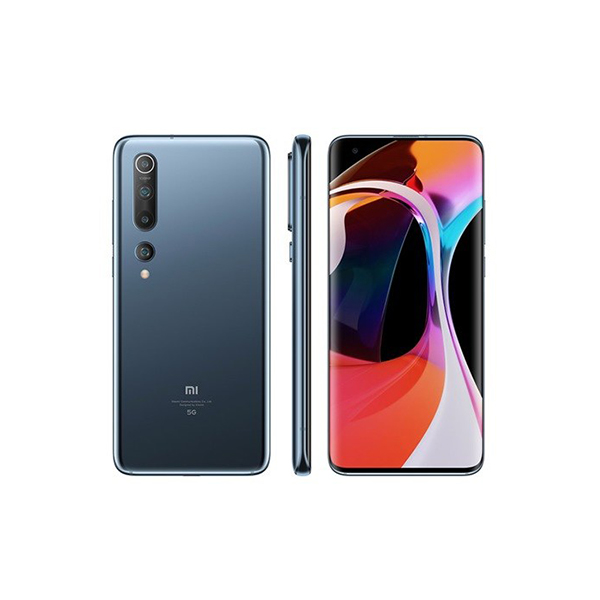
Conclusion
The Xiaomi Mi 10 is a well-rounded flagship device, offering top-notch performance, an impressive camera system, and a premium design at a competitive price. While it has a few shortcomings, such as the lack of an IP rating and no expandable storage, it remains an excellent option for users seeking a premium smartphone experience without breaking the bank.
Review
Disclaimer Note
All prices in Pakistan is updated daily from the price list provided by local shops and dealers but we can not guarantee that the information / price on this page is 100% correct (Human error is possible), always visit your local shop for exact cell phone cost & rate.
